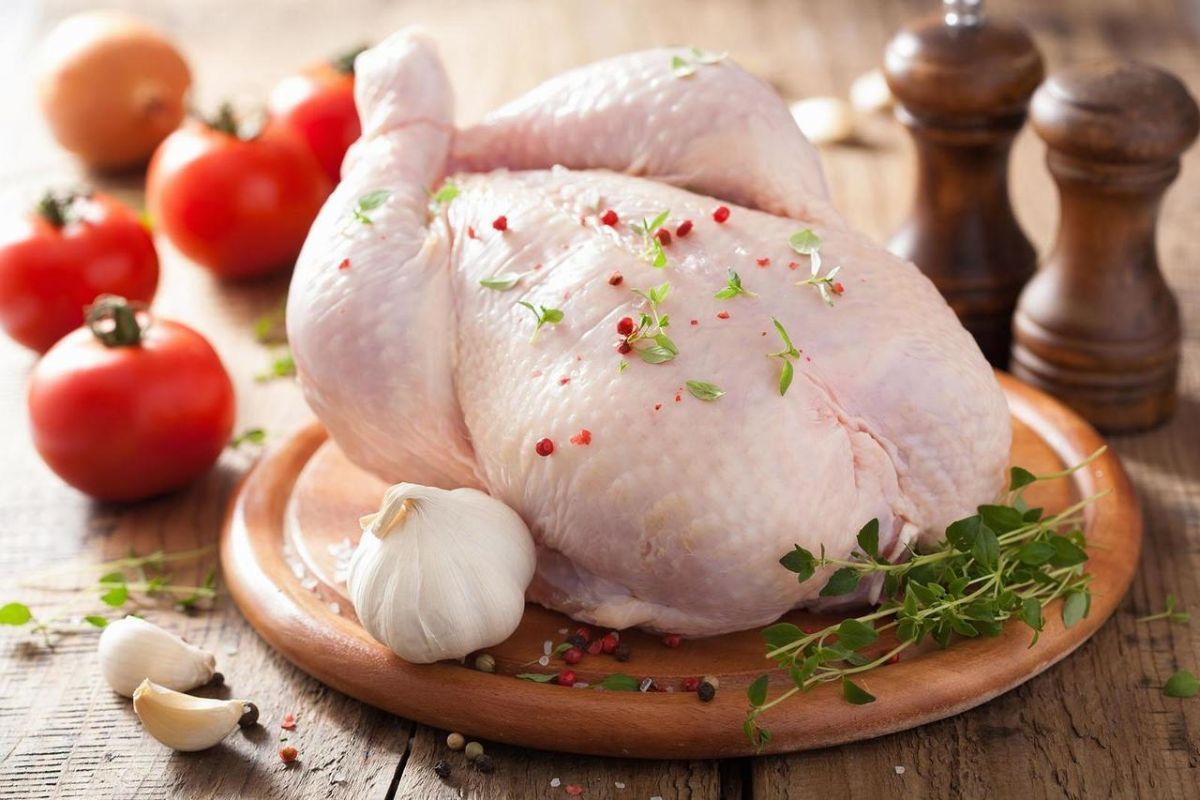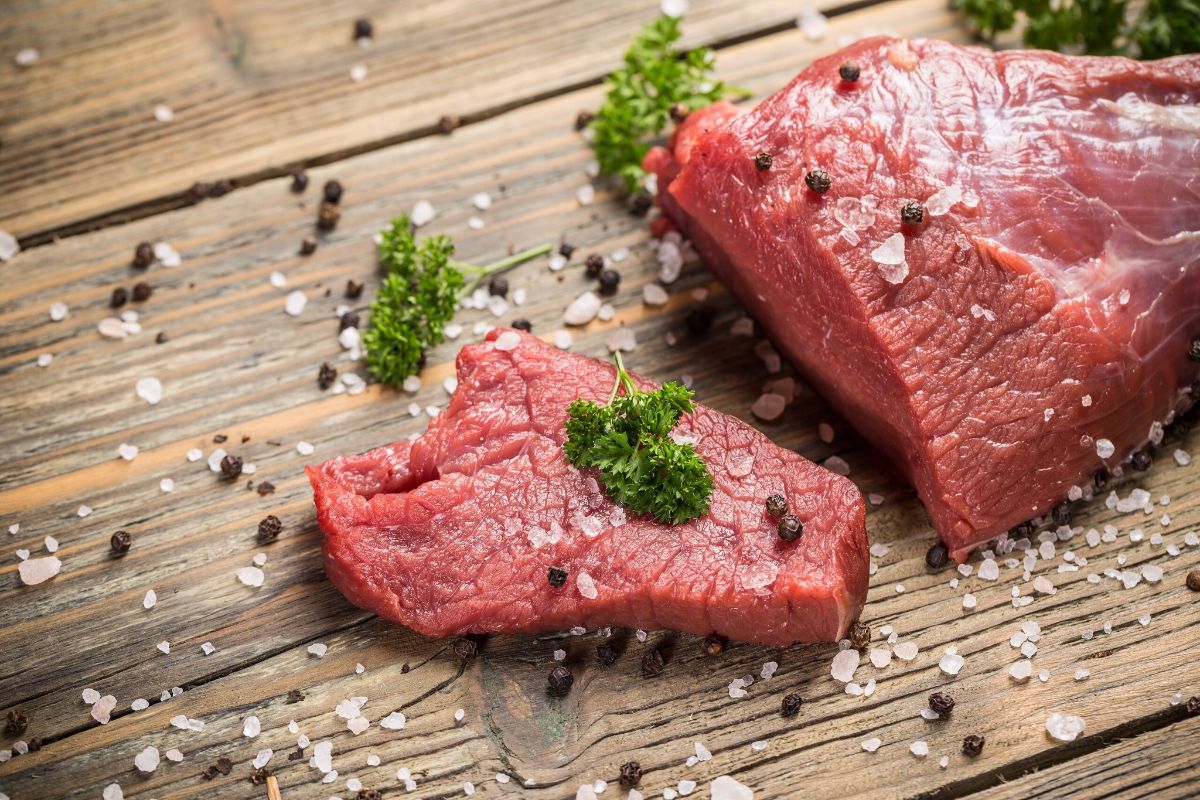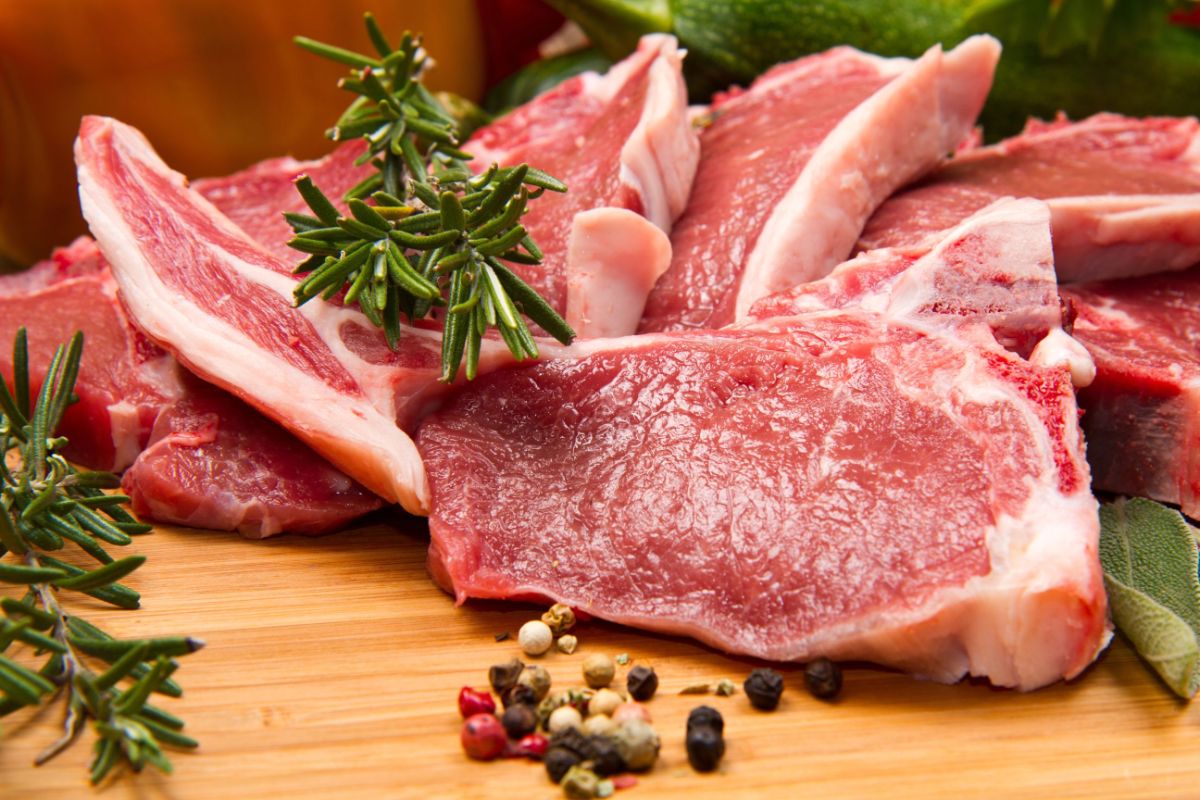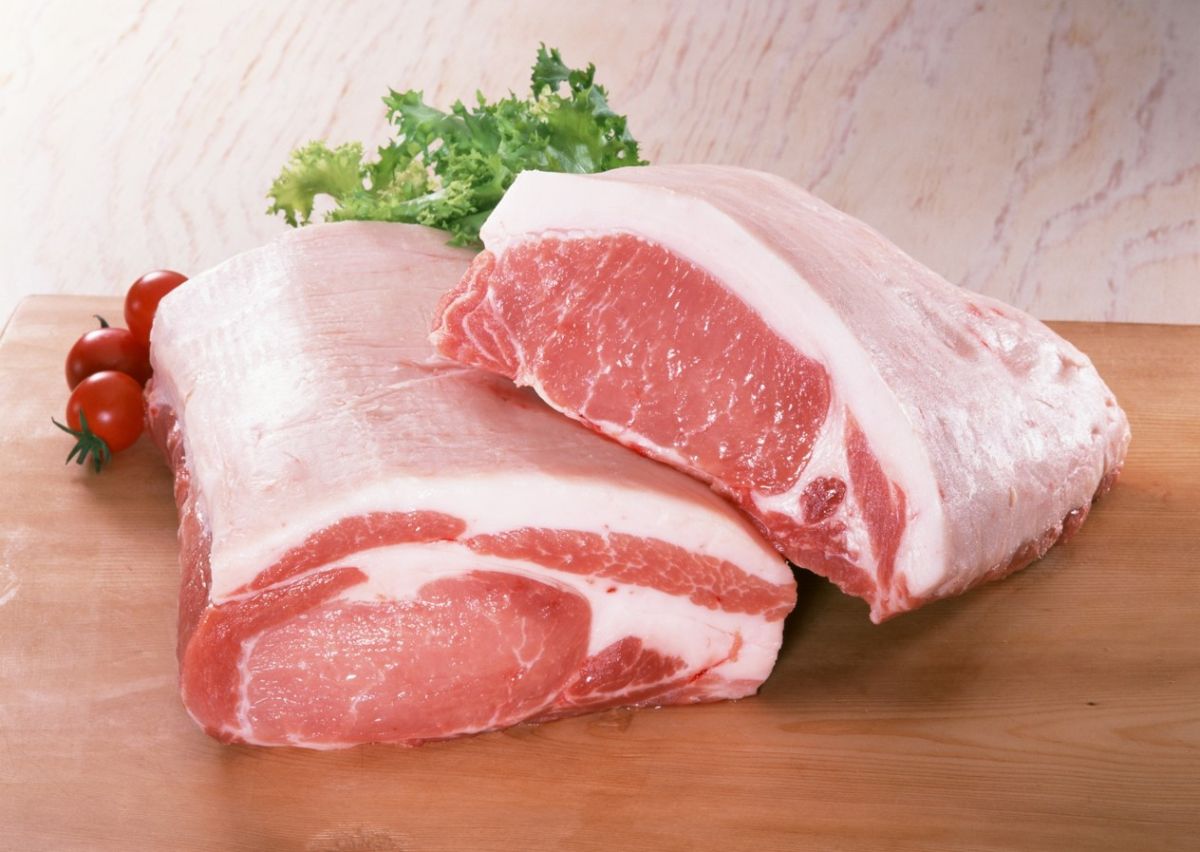What is useful and harmful about red meat: a review of research
Red meat is a unique natural source of proteins, vitamins and minerals. It is these types of meat that are rich in iron, which is involved in the formation of shaped blood elements that supply all body tissues with oxygen.
Red meat also improves the functioning of the brain and musculoskeletal system, significantly reduces the risk of anemia.
However, there is evidence that when abused, it increases the risk of cancer and cardiovascular disease.
6 useful properties
Below are 6 theses about the benefits of red meat for our health, which are confirmed in scientific research.
1. High nutritional value
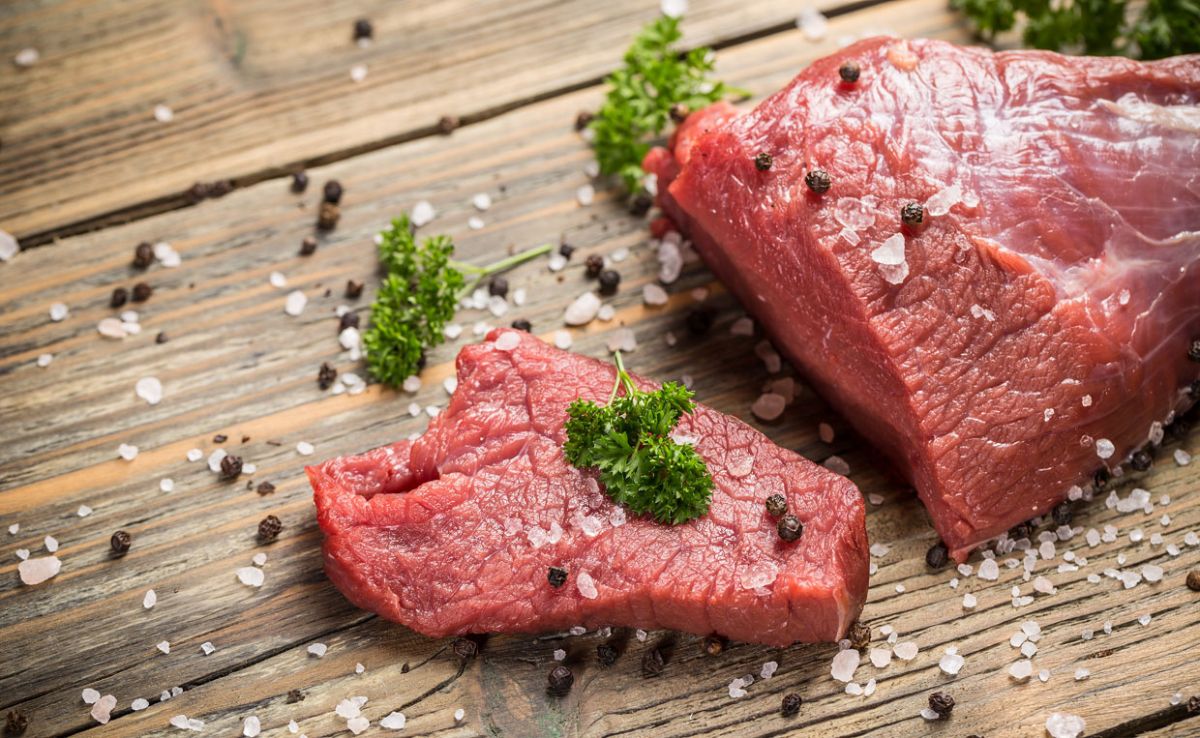
All red meats are rich in vitamins and minerals. For example, 100 grams of beef provides the human body with the following substances:
| Name of the component | Approximate percentage of daily requirement |
| Vitamin B12 | 37% |
| Vitamin B3 | 25% |
| Vitamin B6 | 18% |
| Iron | 12% |
| Zinc | 32% |
| Selenium | 24% |
Also in 100 grams of any red meat contains approximately 25% of the daily requirement for proteins consisting of essential amino acids (they are extremely difficult to obtain from plant foods), and 15% of the daily requirement for valuable fats.
Red meat must be in the diet of children, women during pregnancy or during heavy menstruation, as well as people who have undergone severe surgical interventions.
2. Prevention of anemia
 As claimed Chilean scientists, it is enough to eat red meat only 3 times a week to reduce the risk of anemia to almost zero.
As claimed Chilean scientists, it is enough to eat red meat only 3 times a week to reduce the risk of anemia to almost zero.
Anemia is quite common (especially in old age) a disease in which it decreases Hemoglobin level and/or red blood cells in the blood. As a result, oxygen starvation of all body tissues is observed, and atrophic changes gradually progress.
The most common causes are vitamin B12 or iron deficiency. Deficiency can be caused by pathologies of the bone marrow, gastrointestinal tract, as well as irrational eating behavior.
Almost any type of meat contains a large amount of B vitamins, but iron is mainly available in red varieties ( beef , pork , mutton , etc.).
3. Strengthening bones
 Red meat is a good source of proteins, which are the main building blocks in the body.
Red meat is a good source of proteins, which are the main building blocks in the body.
With insufficient protein intake, the development of osteoporosis is observed – a decrease in bone mineral density . As a result, bone pain appears, the risk of fractures increases, and skeletal curvature (scoliosis) is more common.
According to American scientists, regular consumption of animal products reduces the risk of bone fractures by 69%.
Also recommended women eat red meat during menopause, when, against the background of sudden hormonal changes, there is a physiological decrease in bone density.
4. Maintaining muscle mass
 Proteins are necessary not only for building up, but also for maintaining muscle mass in the body. Regular physical training combined with high protein intake is the key to maintaining skeletal muscles.
Proteins are necessary not only for building up, but also for maintaining muscle mass in the body. Regular physical training combined with high protein intake is the key to maintaining skeletal muscles.
Proven that low protein levels in the diet lead to multiple atrophic changes in muscle fibers (with increased loads) or even to the development of sarcopenia, an age–related degenerative change in muscle tissue. Sarcopenia significantly reduces the quality of life, as it restricts physical activity, leading to disability.
You should consume at least 120-150 grams of protein per day to maintain muscle mass at the proper level.
5. Improving athletic performance
 Systematic consumption of red meat has a beneficial effect on the functional capabilities of the musculoskeletal system.
Systematic consumption of red meat has a beneficial effect on the functional capabilities of the musculoskeletal system.
Red varieties are rich in creatine, taurine and beta-alanine, biological substances valuable for muscle fibers.
Creatine, according to research data , provides myocytes with energy, and also participates in the growth of muscle mass.
Beta-alanine, according to scientists from the UK, it is necessary for the synthesis of carnosine, which reduces the severity of fatigue after training and improves the quality of any physical exercise.
Taurine, according to information specialists from Thailand, supports the work of the cardiovascular system, increases the volume of blood flowing to the muscles with oxygen and various nutrients.
6. Normalization of the brain
 Any meat (white, red, processed) is rich in B vitamins (B1, B3, B6, B12).
Any meat (white, red, processed) is rich in B vitamins (B1, B3, B6, B12).
According to scientists, regular intake of the described substances into the body contributes to Improve memory and attention , activation of thought processes.
Also information is available regarding the reduction in the incidence of a number of degenerative brain diseases (Alzheimer's disease and Peak) with a sufficient level of meat consumption.
Harmful properties
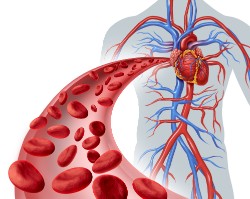 The consumption of red meat varieties is associated with some risk of harm to health. This risk is especially increased due to excessive consumption or improper cooking method.
The consumption of red meat varieties is associated with some risk of harm to health. This risk is especially increased due to excessive consumption or improper cooking method.
The potential harmful properties of red meat include:
- Heart and vascular diseases. Red meats are rich in saturated fats and trans fats, which increase the concentration of plasma cholesterol in the blood. As a result, the risk of atherosclerotic plaque formation increases. Also marked increased formation of trimethylamine N-oxide in the intestine with regular consumption of such meat. This metabolite increases the risk of death from cardiovascular pathologies.
- Malignant tumors. Specialists of the World Health Organization claim that red meats can be carcinogenic to the human body, and processed or fried meat is guaranteed to be carcinogenic. Eating such meat increases the risk of developing cancer of the colon and rectum, prostate in men, pancreas, and stomach the most.
- Type II diabetes mellitus. Recent scientific research notes the connection of red meat with an increase in the incidence of this disease.
- Allergic reactions. Hypersensitivity to proteins is uncommon and can be characterized by any course: from urticaria to anaphylactic shock.
- Helminthiasis infection. Meat (with inadequate heat treatment and improper livestock breeding conditions) may contain parasites that are dangerous to humans. For example, pork can become a source of tapeworm, trichinella, or toxoplasma.
Separately, it should be noted the difference between the different ways of cooking meat. For example, the safest are:
- Baking in the oven;
- Boiling;
- Steaming;
- Extinguishing.
Frying in vegetable oil gives any meat a significant carcinogenic effect, since the product increases the content of substances that can cause malignant processes:
- Nitrosamines;
- Heterocyclic amines;
- Glycation end products;
- Oxidized lipids.
Admission Tips
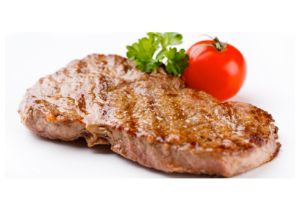 There are several rules for healthy meat consumption:
There are several rules for healthy meat consumption:
- Using mild cooking methods. Preference should be given to stewing, cooking, steaming or in the oven. The consumption of fried red meat should be limited or completely abandoned.
- Rejection of vegetable oils. If it is impossible to give up fried meat, you should limit the use of vegetable oils, which after thermal exposure negatively affect the incidence of cancer. It is recommended to give preference to non-stick frying pans.
- Combination with vegetables and fruits. Any vegetable dishes reduce the carcinogenic properties of meat products. The most valuable in this regard are representatives of the Cruciferous family (cabbage, broccoli , arugula , spinach , turnip, kohlrabi ).
- Rejection of processed meat. Sausages, sausages, pickled, dried, smoked meat do not bring significant benefits to the body, but on the contrary have a negative effect, since they contain a lot of fats, flavors and other additives. The concentration of essential vitamins is extremely low.
- Rationing of admission. Such meat is rich in fats, which, when taken without control, significantly increase the energy value of the diet and increase the risk of obesity.
- Combination with some drinks. It has been proven that eating meat together with coffee or red wine significantly reduces the carcinogenic effect.
- Manufacturer's choice. It should be remembered that careful control is required for any animals on farms, otherwise they can serve as sources of parasites. It is also recommended to give preference to meat from animals that have not been grown with antibacterial and hormonal drugs.
Following simple rules of consumption and choice can significantly reduce the negative properties of meat.
Conclusion
- Thus, red meat has both positive and negative qualities.
- With adequate use, it serves as a source of valuable protein, vitamins and minerals, improves the functioning of the musculoskeletal system and the brain, strengthens bones and reduces the likelihood of anemia.
- When taken in excess volumes or fried, such meat induces the appearance of malignant processes, cardiovascular and endocrine disorders.

